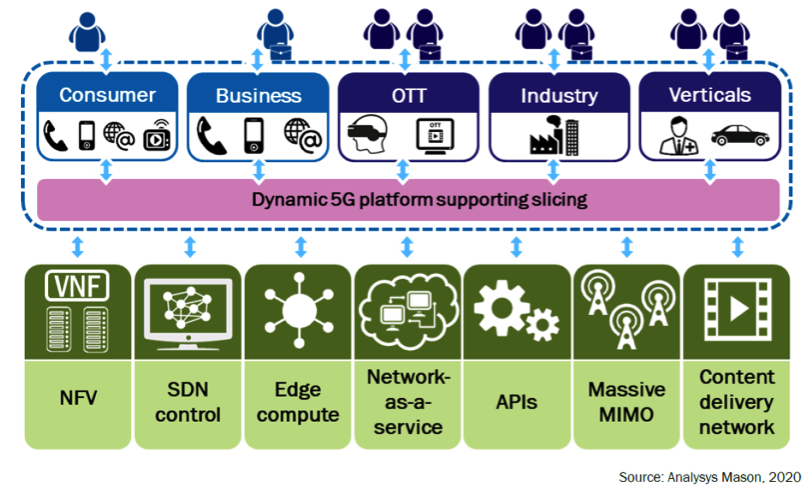The rollout of 5G networks is well underway, especially in developed mobile markets, yet realizing the full monetization potential of 5G is still a work in progress. As with any large-scale technology transformation, investment takes place in multiple phases, with the value expected to build step by step.
The first phase of non-standalone (NSA) 5G network rollouts relies on the existing 4G core which places some constraints when it comes to agile, innovative service offerings. In time, this will be overtaken by the second phase of rollouts, 5G standalone (SA), including migration to 5G New Radio standalone (NR SA) networks.
In contrast with previous mobile generations, the most important element will not be the RAN itself, but a fully virtualized, sliceable and disaggregated 5G core, which can support a range of applications and industries to address specific needs in an agile way, and so revolutionize an operator’s business opportunities. Together with a common, open framework of developer tools, services and application programming interfaces (APIs), the new 5G core will enable an endless variety of services to be launched by both service providers and a vast ecosystem. This ability to enable a much wider range of services, user experiences and pricing options is a significant aspect of 5G SA networks, providing a basis from which to drive the monetization of 5G.
To maximize 5G monetization, it’s critical that operators take a dynamic 5G platform approach (see diagram below) whilst also transitioning to the 5G core. This platform strategy will transform the network into a set of configurable, programmable functions running on cloud infrastructure. The sliceable platform will give operators the agility they need to launch innovative use cases, as well as to capture the low-hanging fruit of B2B 5G services. Use cases will be extremely diverse, from smart sensor monitoring to fixed wireless access, all the way to autonomous vehicles, automated mining, smart cities, remote surgery and others still to materialize as 5G becomes increasingly prevalent.

Overview of a programmable, sliceable 5G network in which key technology enablers are brought together to support a wide range of industries and use cases.
5G networks, with their built-in programmability and advanced capabilities, will drive new and exciting monetization opportunities. Until now, the typical approach to technology evolution began with building out the network, and then working on defining the services running on top of it. Network slicing turns this on its head, enabling a top-down approach: first the business requirements are defined and only then is a network slice tuned to the specific service. Each network slice is configured with the network capabilities needed to deliver specific service requirements.
Moving from the traditional 3G/4G one-size-fits-all approach to one based on 5G network slicing will enable services to be configured to the specific needs of disparate customers, applications and industry verticals. The sliceable platform will give operators the freedom to make critical and individual decisions around their role in the 5G value chain, and where and how they expect to drive most value.
To learn more, download this whitepaper by Caroline Gabriel of Analysys Mason. To explore Amdocs’ 5G slice management solution, visit amdocs.com/5G-Slice.
The post Understanding the role of the sliceable network in 5G monetization appeared first on RCR Wireless News.
